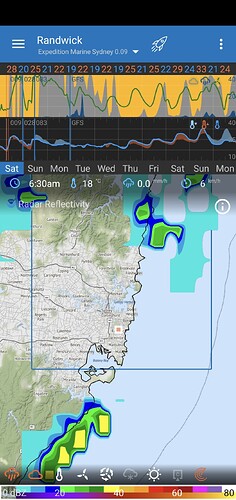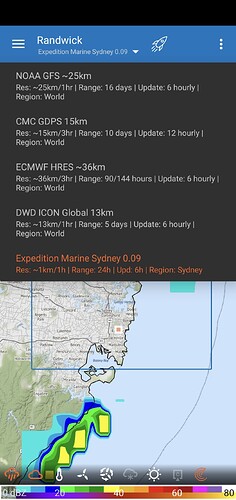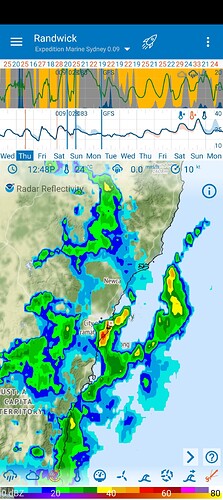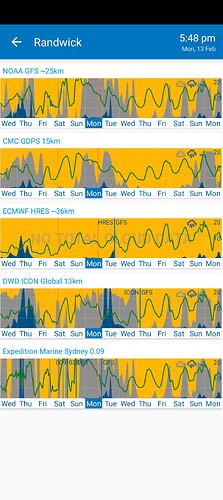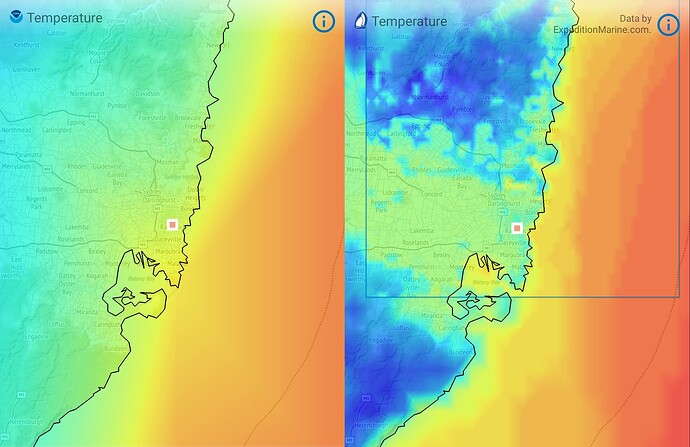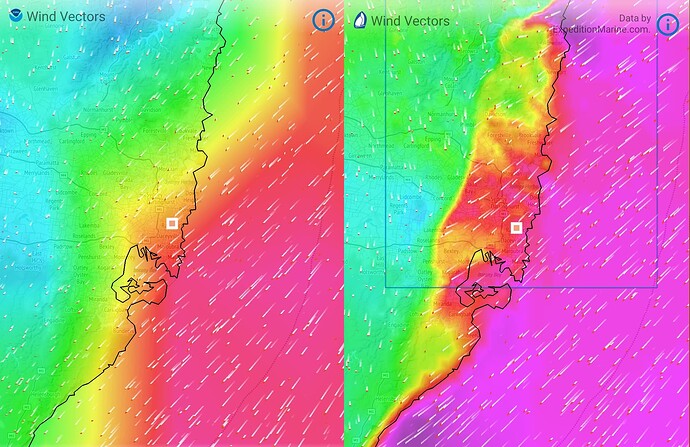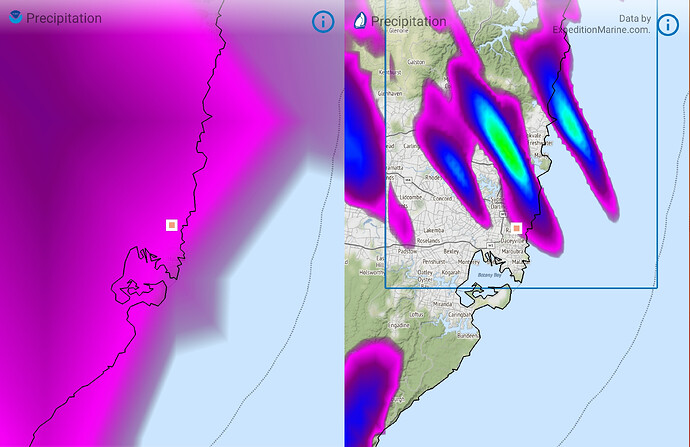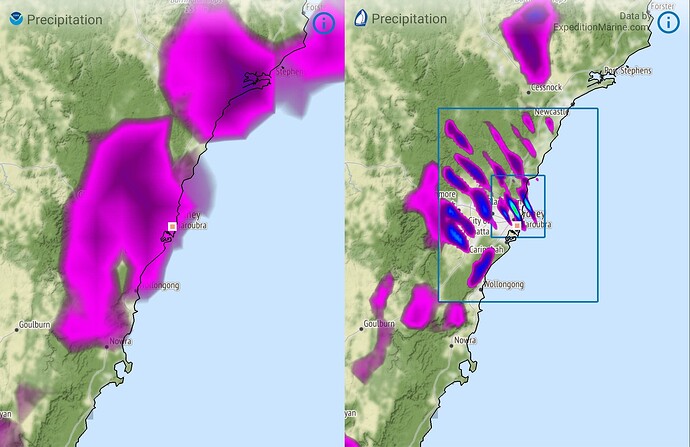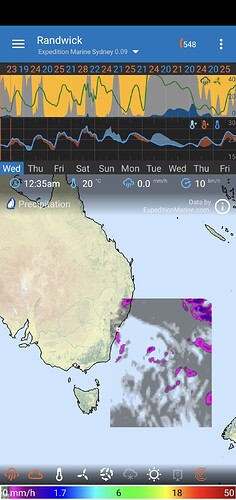Hi @Lockscombi,
I very much doubt the silver package is superior to the Expedition Marine models. Here are some comparisons between GFS and Expedition Marine.
Notice the temperature differences between regions being resolved.
Notice the resolution where the wind form the west hits the wind from the east.
Here is a zoomed in view of precipitation. GFS is a blurred version of the Exp. Marine.
Here is a zoomed out version:
The common reasons people think models are inaccurate is they don’t understand the limitations of weather models and their expectations don’t match the reality.
Let’s take the temperature map for example. At 25km resolution, the GFS model has ~6 grid points in the view. Exp. Marine at 900m resolution will have 30 odd grid points between two GFS grid points. You cna see the temperature variation in the image - how does GFS capture this temperature variation? It simply can’t represent 30 temperature values with one value so it takes the average. So when people say GFS is consistently 5C wrong, this is the bias caused by taking the average. This is the most common limitation people don’t understand. Interesting tip, this bias can be consistent so you can remove it to get a more accurate prediction of temperature, and is what your standard weather app like Accuweather does - but you lose the big picture. This is a simplistic approach to Model Output Statistics (MOS).
The other example is the precipitation. You can Exp. Marine is more defined and GFS is blurred out. So people think GFS was more accurate because it showed rain when there was rain whereas the more defined Exp. Marine might not pass over them and does not show rain. But here’s the thing, the Exp Marine pattern of rain is generally a good prediction of what the rain will be like but the exact location where the rain blobs will be is more difficult to predict. In the example above, I would say there will be passing rain showers.
Why is it difficult to predict were the rain blobs will be? It’s because weather models take 4-5 hours to solve, so you’re at best looking at a weather prediction based on data measured 6 hours ago. At worst, it can be based on data measured 9-10 hours ago. A lot can change in the weather in a few hours. By this stage, the original prediction might have predicted the rain to arrive an hour too early or late - then people think the model was wrong. Whereas the blurred out prediction by GFS is so wide that arriving a hour early or late, doesn’t matter, you are still covered by the blur. This is another limitation of weather models people don’t understand.
One of the best models in the world is HRRR, where they reduce this limitation by solving a 3km resolution model over the entire USA every hour!! and has 15 minute time steps.
They also resolve the model 20 odd times using slightly different starting conditions. These are called Ensemble models. This would result in different rain patterns. You can see a good example of these predictions if you turn on hurricane tracks. These show the path predicted by each of those 20 odd models. There’s Cyclone Gabriel hitting Auckland at the moment if you want to see this.
Low resolution global models are good for predicting large weather system and indicate when rain might occur.
High resolution model capture the variation caused by fine terrain features and predict the patterns of the rain.
People complain that the weather models shown in Flowx are inaccurate. They fail to realise billions are spent to solve those models and are the best weather predictions human have ever made. But they still have limitations.
Fun fact, the weather predictions you see in typical weather apps (Accweather, Wunderground, Yahoo weather, …) all use these weather model (GFS, ICON, GDPS, ECMWF, HRRR, RDPS, etc…) to make their predictions.
![]()
